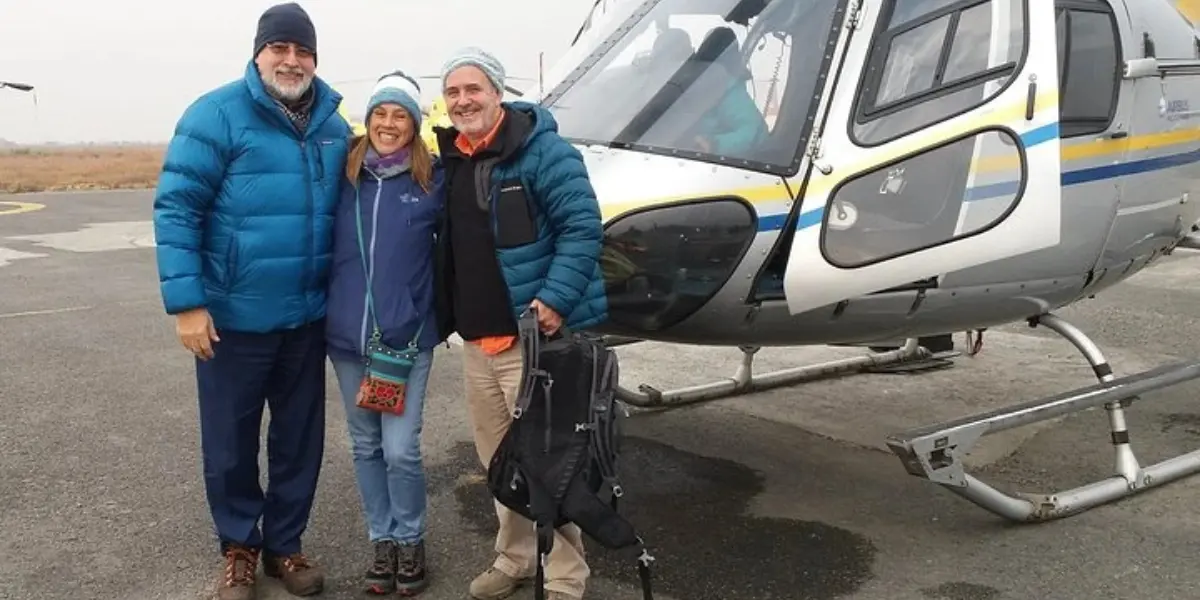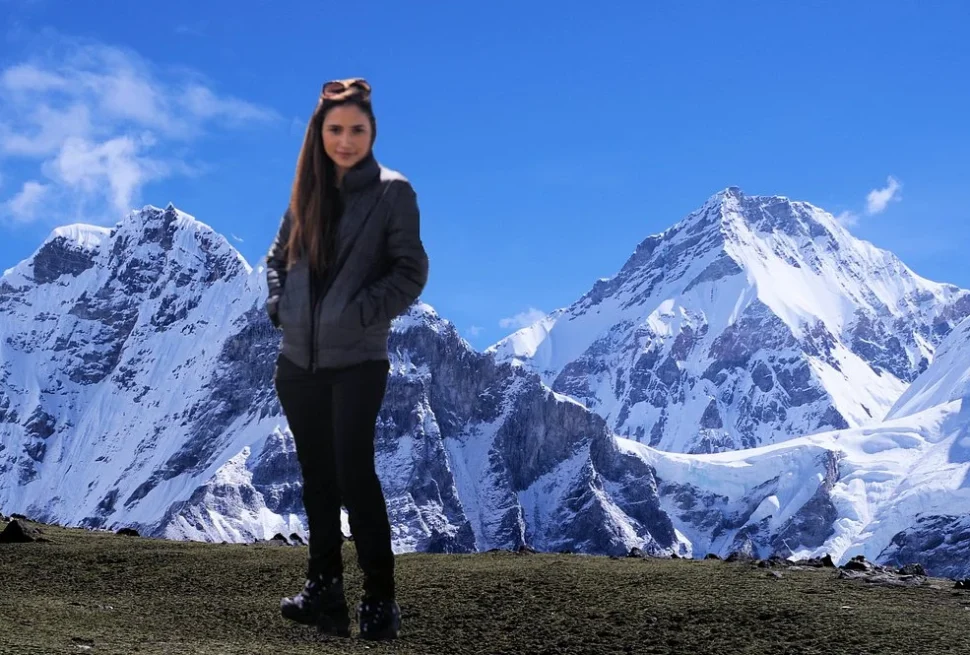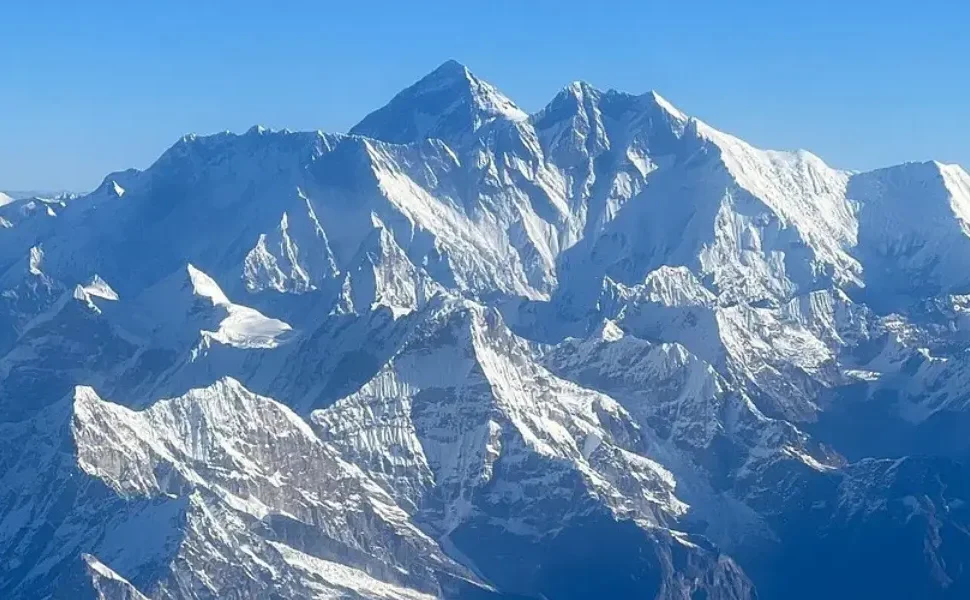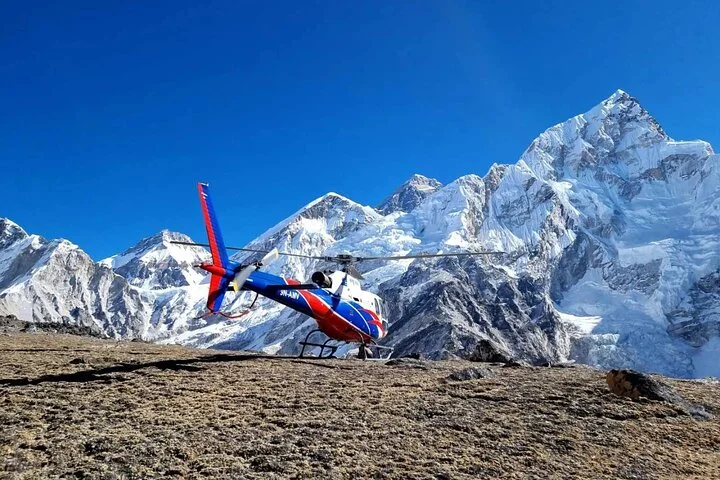The History of Everest Base Camp Helicopter Tours is interesting because it involves flying, adventure, and people trying to reach the top of the world. In the past, only the most experienced hikers and climbers could get close to Mount Everest. Helicopter tours, on the other hand, make it possible for more people to see the beauty of the Everest region without having to walk a long way.
Over time, helicopters got better. Nepal saw an increase in tourism. And the dream of flying close to Everest Base Camp (EBC) came true.
Table of Contents
- The Beginning of Tourism in Everest
- Helicopters Enter the Himalayan Scene
- First Everest Helicopter Landings
- Growth of Helicopter Tour Services
- Why Helicopter Tours Became Popular
- Timeline: Key Moments in Helicopter Tours
- Modern-Day EBC Helicopter Tours
- Challenges and Controversies
- Future of Everest Helicopter Tours
- FAQs: Everest Base Camp Helicopter Tour History
The Beginning of Tourism in Everest
In the 1950s, the world turned its attention to Nepal after Sir Edmund Hillary and Tenzing Norgay climbed Mount Everest. People who liked to go on adventures started to wonder how they could get to this magical place. But back then, the only way to get to Everest Base Camp from Lukla was to walk there, which took 12 to 14 days.
- High altitude
- Basic facilities
- Cold weather
- Tough trails
Helicopters Enter the Himalayan Scene
During the 1960s and 1970s, helicopters mostly came to Nepal to help with military and rescue missions. They weren’t used for tourism at first. The Nepalese Army and some aid organisations used helicopters to reach remote mountain areas. In the 1980s, Nepal’s tourism sector saw growth. Adventure companies started asking:
- Can we use helicopters to serve tourists?
- Can we fly them near Mount Everest?
This question was the starting point of Everest helicopter experiences.
First Everest Helicopter Landings
In the late 1980s and early 1990s, test flights to higher altitudes began. Some foreign pilots and Nepali aviation experts got to fly helicopters in the thin air near Everest Base Camp, which is about 5,364 meters (17,598 feet) above sea level.
First Confirmed Landing at Everest Base Camp
In the 2000s, more helicopter companies, such as Simrik Air, Air Dynasty, Fishtail Air, and Shree Airlines, began flying in the Everest area. They used light helicopters like the Eurocopter AS350 B3e, which was excellent for landing at high altitudes.
- Shorten the time to reach Everest
- Offer aerial views
- Provide emergency rescue services
These factors shaped the future of helicopter tours to Everest.
Growth of Helicopter Tour Services
More helicopter companies, including Simrik Air, Air Dynasty, Fishtail Air, and Shree Airlines, started flying in the Everest area in the 2000s. They used light helicopters like the Eurocopter AS350 B3e, which was great for landing at high altitudes.
Services Offered
- Everest Base Camp helicopter tours
- Hotel Everest View landings
- Rescue and evacuation
- Aerial photography
- Charter flights
By the end of 2010, heli-tourism was no longer a niche—it was a fast-growing segment of Nepal’s adventure tourism.
Why Helicopter Tours Became Popular
Major Reasons for Growth
- Time-saving: A helicopter tour to EBC takes just 4–5 hours round-trip from Kathmandu.
- Easier access: Great for senior citizens, families, or people with limited time.
- Aerial views: See Everest, Lhotse, Nuptse, Ama Dablam, and the Khumbu Glacier from the sky.
- Comfort and safety: No long treks or altitude risks.
- Special occasions: Honeymoons, birthdays, anniversaries, and even weddings at Everest became trendy.
Key Moments in Helicopter Tours
| Year | Event |
| 1953 | First Everest summit by Hillary and Norgay |
| 1970s | Helicopters used in Nepal for rescue and military |
| 1980s | First tourism-focused helicopter ideas emerge |
| 1997 | First high-altitude test flights begin |
| 2002 | First successful commercial landing at EBC |
| 2010 | Rapid growth in heli-tourism begins |
| 2015 | Helicopters used massively after the Nepal earthquake |
| 2020 | Rise in luxury Everest helicopter packages |
| 2023 | Record number of EBC helicopter tours post-COVID |
Modern-Day History of Everest Base Camp Helicopter Tours
A typical Everest Base Camp Helicopter Tour includes:
- Hotel pickup in Kathmandu
- Flight to Lukla Airport
- Scenic ride above the Khumbu Valley
- Short landing near Everest Base Camp or Kala Patthar
- Breakfast at Hotel Everest View
- Return to Kathmandu
Types of Helicopter Tours
- Shared Group Tours (economical)
Helicopter tours now serve all kinds of travellers. They are even marketed as once-in-a-lifetime adventures.
Challenges and Controversies
Due to high demand, some issues started to appear:
- Too many helicopters landing at once
- Noise pollution
- Waste management problems
- Lack of strict guidelines
The Civil Aviation Authority of Nepal (CAAN) is starting to work on better rules. People are working to limit the number of landings and make things safer.
Environmental Concerns
- Helicopters disturb wildlife
- Carbon emissions in a fragile zone
- Pressure on remote communities
- Tour operators are now focusing on eco-friendly practices and carbon-offset initiatives
Future of Everest Helicopter Tours
By the end of 2010, heli-tourism was no longer a niche but a quickly growing part of Nepal’s adventure tourism. Everest Base Camp Helicopter Tours has a bright future, but they need to be careful. Tour companies, the government, and travellers all need to work together to:
- Maintain safety and sustainability
- Respect local communities and the environment.
- Offer better customer experiences
Choose Everest Base Camp Heli Tour Nepal for friendly and affordable tour packages. Helicopters release carbon, so you might want to offset your emissions and avoid plastic waste while you’re on vacation. Support local communities and respect the fragile Himalayan ecosystem.
FAQs (Frequently Asked Questions)
Helicopter tours started in the 1990s, evolving from emergency rescue services into luxury adventure experiences.
Most tours last 4–5 hours from Kathmandu, including landing and scenic stops.
Yes, with modern aircraft and skilled pilots, tours are generally safe. However, weather and altitude are risks.
Prices range from $900 for shared tours to over $3,000 for private flights.
Yes, but people with serious heart or lung issues should consult a doctor due to altitude risks.




